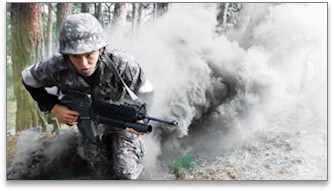Regression modeling strategies for optimizing the appropriate size of reserve forces in Republic of Korea
DOI:
https://doi.org/10.37944/jams.v6i2.187Keywords:
reserve forces, standing forces, simultaneous equation model, multiple regression analysis, two-stage least squares estimate methodAbstract
This study focuses on the size of reserve forces and the factors affecting their size. As a result of analyzing theory and prior research, we identified the relations between standing and reserve forces. To minimize the problem of relations, we used a two-stage least squares estimate with simultaneous equations as the analytical method used. We utilized the 2022 cross-sectional data points and analyzed the sample by dividing it into 69 countries and 38 countries with reserve forces. In 38 countries, the reserve force size derived from regression analysis was 2.2 million people, and the standing force size was 470,000 people. The empirical analysis shows that 2.2 million reserve forces solved the single-equation estimation problem caused by the two-way causal relationship between reserve force size and standing force size through simultaneous equations, which further improved the consistency of the estimated coefficients. In terms of size, it was smaller than the 2.75 million presented in Defense Reform 2.0, which seems to be due to the analysis of countries with relatively capital-intensive military structures compared with Korea. Various factors are expected to further increase the size of future reserve forces: the rapid decline in the nation’s birth population; the proportion of defense spending to the government’s budget; the reserve forces, which have been further expanded by Defense Reform 2.0; and the prospect of a reduction in standing forces expected by Defense Innovation 4.0. Therefore, the size of future appropriate reserve forces will increase further than the current appropriate level, making it necessary to determine policies related to reserve forces and develop appropriate measures for procurement.
Metrics
References
Cho, P. G. (2022). A Study on the Improvement Plan of Long-Period Storing Rifles Management to Make Reserve War Power Become the Best. Military Research and Development, 16(2), 281-301. https://www.earticle.net/Article/A423403
Jung, J. S. (2019). A study on the operation of reserve forces after the unification of Korea : focusing on judgment the scale of reserve forces and establishment system. [Doctoral dissertation, Wonkwang University]
Kang, Y. G. (2020). A Study on the Development Direction of Reserve Forces Training Center Operation and Scientific Reserve Forces Training. Review of Korean Military Studies, 9(2), 99-121. https://doi.org/10.34166/rokms.2020.9.2.99
Kang, Y. G., & Kim, T. S. (2019). Evaluation of the Shaping Elite Reserve Forces of the ROK Armed Forces and Future-Oriented Policy Direction: Focused on the 「Defense Reform 2.0」 Reserve Forces Policy. Journal of Northeast Asian Studies, 24(3), 31-56. https://doi.org/10.21807/JNAS.2019.09.92.031
Kim, Y. M. (2022). European Security Changes With The Launch of AUKUS: Focusing on Europen Union’s Strategic Autonomy. The Journal of Contemporary European Studies, 40(1), 165-187. https://doi.org/10.17052/jces.2022.40.1.165
Lee, S. H. (2015). Change of Aspects on Future Warfare in the Korean Peninsula and Role of Ground Forces. STRATEGIC STUDIES, 22(3), 107-137. UCI : G704-001467.2015.22.3.004
Oh, S. K. (2018). An empirical study on the optimal size of reserve forces. [Master’s dissertation, Korea National Defense University]
Park, C. H. (2016). The Role of Ground Force and International Cooperation against the Threat of International Terrorism. Korean Journal of Military Art and Science, 72(3), 1-24. https://doi.org/10.31066/kjmas.2016.72.3.001
Yang, S. B. (2021). Optimized operation of regional reserve forces in a changing future security environment. Journal of Advances in Military Studies, 4(3), 21-51. https://doi.org/10.37944/jams.v4i3.121

Downloads
Published
How to Cite
Issue
Section
License
Copyright (c) 2023 Journal of Advances in Military Studies

This work is licensed under a Creative Commons Attribution 4.0 International License.

This work is licensed under a Creative Commons Attribution 4.0 International License.

이 저작물은 크리에이티브 커먼즈 저작자표시 4.0 국제 라이선스에 따라 이용할 수 있습니다.






